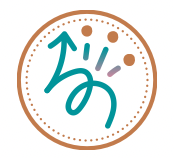Adaptive Clothing Using Velcro Closures
Today we are making adaptive clothing by replacing shirt buttons with Velcro. This type of adaptive clothing can help make getting dressed easier for those with fine motor or upper extremity impairments. Velcro fasteners can be beneficial for anyone who has difficulty manipulating buttons making the act of fastening shirt closures easier and pain free. Plus using Velcro fasteners can be a big time saver and improve independence in dressing too. Let’s get started.

This content is not intended as a substitute for medical advice, diagnosis, or treatment. Always seek the adive of your physician, therapist, or other medical professional regarding a condition or treatment. This content is for informational purposes only. See full disclosure here.
All links in this post are non-affiliate links, and are provided for your convenience.
I don’t know about you, but I really enjoy listening to TED Talks. I love hearing the stories, feeling inspired by all kinds of new ideas, and actually, really enjoy watching the presentation and overall public speaking aspect of the TED Talks too.
We recently got back from my uncle’s 90th birthday celebration. On our way back home on our six hour trip from Ohio, I came across a fantastic TED Talk by Mindy Scheier, the founder of the Runway of Dreams Foundation. The Runway Of Dreams Foundation is a leader in adaptive clothing initiatives, including partnering with big name brands such as Tommy Hilfiger to offer the first mainstream adaptive clothing line for kids. Give her talk about adaptive clothing a listen, it’s fantastic.
What Is Adaptive Clothing?
Adaptive clothing is clothing specifically designed to meet the needs of people with disabilities (The Need For Organized Intervention Through Adaptive Clothing, 2020). This type of clothing can help make getting dressed easier and less time consuming. Whether the process of putting on clothes or manipulating fasteners is difficult, adaptive clothing can assist in gaining independence in dressing. Functional, inclusive clothing is specifically designed to fulfill requirements of the wearer that include the accessibility of the garment, manageability of the clothing including fasteners, and, of course, fashionability of the garment itself (Functional Clothing For The Differently Abled, 2017)
Accessible clothing helps make getting dressed easier with the use and special placement of various types of fasteners. Whether it’s magnets, additional zippers, or the use of Velcro, inclusive clothing can be beneficial for individuals who want to make getting dressed easier and less time consuming. Accessible clothing can help people become more independent in dressing.
Furthermore, this type of clothing should provide ergonomic and tactile comfort, improve quality of life, keeps the skin clear of irritations, and be meet the needs of daily activities (The Need For Organized Intervention Through Adaptive Clothing, 2020).
Types Of Adaptive Clothing
There are a variety of types of adaptive clothing available ranging from magnetic and Velcro closures to specially designed pants and shirts for wheelchair users. Zip open flaps, magnet closures, elastic waists, front closure bras, and pants with full-length side zippers can help make clothing more functional based on an individual’s needs. Check out this tutorial for thumbless mittens a type of adaptive winterwear.
Inclusive clothing can also include switching fabric types from itchy, scratchy fabrics to a type of fabric that is more soothing and tolerated for the sensory sensitive person. While others may avoid seams and itchy tags all together.
There are a variety of ways to adapt clothing. Today we are focusing on replacing buttons on the front of a shirt with Velcro. This strategy can also be used around the wrist cuffs as well to help lessen the burden of manipulating cuff buttons.
*Make sure to check out the adaptive clothing resources at the bottom of this post.

Velcro Closures Instead Of Buttons
For today’s adaptive clothing project, I will show you a step-by-step way to adapt clothing using Velcro closures in place of buttons. There are various reasons someone might opt for Velcro closures. For example, someone with limited fine motor control and arm range of motion may choose Velcro closures because Velcro requires less fine motor dexterity and requires less time to manipulate than buttons. Velcro closures may also be a good alternative for individuals with visual impairments. For someone else, Velcro closures may help conserve energy. Velcro closures can also help to reduce joint pain associated with arthritis. On the other hand, Velcro closures may decrease the amount of time needed for dressing.

Special Considerations
- When making adaptive clothing for someone, be sure to discuss or consider their needs, best options for fasteners, placement of fasteners, and their piece of clothing to be adapted.
- It is recommended that this project be completed using a sewing machine. You can hand sew the Velcro onto the shirt however, pushing the needle through the Velcro can cause stress on the joints. If you chose to hand sew, make sure to use a thimble to protect your finger.
- As I just mentioned, pushing the needle through the Velcro can cause stress on the joints including when sewing on the buttons. Make sure to use a thimble to protect your finger. If this causes stress on your joints, ask someone else for help, and/or take breaks when needed.
- Try to match the thread you are using to the color of the shirt as best as you can to hide the stitches around the Velcro. For me, if I am unable to find the exact color of thread I need, I often opt for a darker shade rather than lighter. I find a darker shade helps to hide the thread better.
- You can use this same technique to swap out buttons for Velcro on the cuff of a shirt as well.
- Make sure to trim all corners of the Velcro, making them rounded to help prevent scratches and snags.
- Always use caution when working with needles and scissors.
How To Make Adaptive Clothing?

Materials
- Sewing Machine (although this can be done by hand)
- Sewing needle
- Velcro strip (non-adhesive)
- Sewing thread
- Scissors
- Seam ripper (optional)
- Button up shirt of choice


Instructions
- Remove all the buttons you plan to replace with Velcro using scissors or a seam ripper. Remove all loose threads. Set buttons aside.
- Cut Velcro pieces to the size you need. Trim around the edges to make rounded corners. This will help prevent any scratches on the skin and snags. Set aside.
- Position the soft side of the Velcro under the button holes (if you place the rough side of the Velcro under the button hole, the Velcro could scratch the skin while wearing it). Sew a border around the Velcro. Repeat with remaining strips of the soft side of the Velcro. Trim any loose threads.
- Do the same for the rough side of the Velcro, trim edges and place each piece directly over where the buttons used to be. Sew in place using a straight stitch. NOTE: I sewed a second border around the rough side of the Velcro to make sure my stitches were secure. My stitches did not look as tight when sewing on the rough side of the Velcro. Trim loose threads.
- Attach the buttons using a needle and thread in the center of the button hole. Use a thimble to help project your finger and push the needle through. Repeat for all the buttons. Trim loose threads.
- Try on and enjoy.


Have you signed up for the DIY Newsletter? You can also find me on Pinterest.
Adaptive Clothing Resources
Adaptive Clothing Initiatives
- Runway Of Dreams Foundation has been a leader in adaptive clothing initiatives, including partnering with big name brands such as Tommy Hilfiger to offer the first mainstream adaptive clothing line for kids. Runways of Dreams works people with disabilities to access functional, adaptive fashion. The foundation continues to partner with other name brands such as Kohl’s, JCPenny, Target, and Zappos.
- Watch Mindy Scheier, Runway Of Dream founder’s TED Talk
Universally-Designed Clothing Lines
Footwear
- Billy Footwear
- Nike Flyease
- Zappos Adaptive footwear and accessories including footwear that are AFO and orthotic friendly shoes.
Clothing
- JCPenney’s adaptive clothing and accessories
- Target’s Adaptive Clothing Line
- Tommy Hilfiger’s Adaptive Clothing
- Kohl’s Adaptive Clothing
- Magna-Ready offers a variety magnetic adaptive clothing styles for both men and women.
- Check out Equip2Adapt’s list of resources for adaptive winter weather gear for kids as well as winter weather gear solutions for individuals with disabilities. These are both great resources for all things winter weather wear.
Adaptive Clothing Tutorials
- Adaptive Wheelchair Sweatshirt Tutorial by Sew What Alicia
- Create Kids Couture Patterns blog shows how to make a feeding tube pocket for infant clothing
Adaptive Clothing Research Articles
- Functional Clothing For The Differently Abled, 2017 This article reviews and showcases different types of adaptive clothing available through online research and describes availability, at the time, internationally.
- Persons With Disability And The 2030 Agenda Of Sustainable Development Goals: The Need For Organized Intervention Through Adaptive Clothing To Synthesize Elaborate Social Inclusion In Nigeria, 2020 This article researches the United Nations Sustainable Development Goals for 2030 which focuses on improving the lives and standard of living of all people, and how adaptive clothing can help enhance the lives of people with disabilities.
Other Adaptive Clothing Resources
- The American Occupational Therapy Association adaptive clothing ideas







Thank you for sharing your info. I really appreciate your efforts and I am waiting for your furthher post thank you once again.
Review my web blog; Ambrose
Thank you for your message. I’m so glad you found it helpful.
I have found this website because I was looking for advice how to attach velcro to a school shirt for my friends daughter who due to disability cannot open or close buttons.
I found it very useful
Thank you
I am so glad you found it helpful. I will be posting another tutorial this weekend for how to replace an existing zipper with a magnetic zipper. You might find it helpful as well. Thank you for your message. Have a lovely weekend-